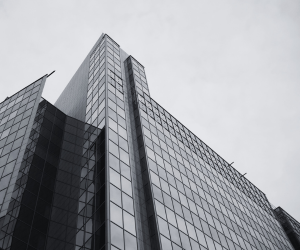Load shedding: What are the tax incentives for alternative power?

Are you fed up with high electricity costs and the debilitating load shedding disaster affecting your business? Perhaps it’s time to consider solar power solutions and their associated tax deductions.
It was 2007 when South Africans first experienced load shedding and, in the 15 proceeding years we’ve been severely challenged by an unreliable power supply and very little in terms of practical or affordable alternatives. What’s more, Eskom’s prices continue to soar (by more than 400%) with more increases proposed.
Our greatest economic risk
With South Africa’s energy crisis being the greatest risk to the country’s economy, businesses and individuals are forced to consider investing in alternative power supplies. President Cyril Ramaphosa’s announcement of a comprehensive plan to fix the power shortages by including state procurement of power from the private sector means that those who can and have installed solar panels in their homes or businesses will be able to sell their surplus power to Eskom.
While implementing this plan is not without its challenges, it has got people reassessing the long-term viability of alternative energy and energy efficiency measures.
Tax incentives: capital expenses and energy efficiency projects
Of significance to most business owners is Section 12B of the Income Tax Act, which provides for capital expenditure deductions for assets used in the production of renewable energy – particularly incentivising the development of smaller solar photovoltaic (PV) energy projects with an accelerated capital allowance of 100% in the first year for solar PV energy of less than 1MW. The second incentive is Section 12L of the Income Tax Act, which encourages investments in local energy efficiency projects and provides a deduction for actual savings resulting from a reduction in energy use.
Capital expenditure deductions (S.12B)
Section 12B provides for a 50/30/20 percent income tax deduction over three years for certain machinery or plant. In year one, 50% of the costs of the assets can be deducted, 30% in year two, and 20% in year three. These assets must be owned by the taxpayer and brought into use for the first time by the taxpayer to generate electricity from PV solar energy or concentrated solar energy. The deduction also applies to improvements of qualifying plant or machinery, providing it’s not related to repairs.
For photovoltaic solar energy of less than one megawatt, taxpayers can deduct 100% of the income tax in year one. In other words, it’s considered to be a depreciation expense and the reduction can be carried over to the next financial year as a deferred tax asset.
In addition to the income tax deduction for capital costs, SARS’ deduction also applies to the direct cost of installation.
Energy-efficiency incentive (S.12L)
Section 12L, read with the Regulations, enables individuals or entities to claim a deduction for energy-efficiency savings for activities performed when carrying out any trade. This also applies to all energy carriers (electricity and fuel, but not renewable energy sources) providing the individual or entity is registered with the South African National Energy Development Institute (SANEDI).
Unlike the capital expenditure deduction, you do not need to own the equipment to claim the deduction, which is calculated at 95c per kilowatt hour or kilowatt-hour equivalent of energy-efficiency savings.
To benefit from lower energy costs and tax incentives and rebates, there are certain criteria taxpayers need to meet. These incentives and rebates are complex so, before diving into investing in alternative energy sources, get advice from your accountant.
Need help with your alternative energy tax deductions?
Call Counteractive today.
Related Articles
Hidden cost of DIY financial management
Running a business in South Africa is no easy feat. Between managing operations, sales, and staff, many business owners try...
Read MoreVAT: Common pitfalls and cash flow
Value Added Tax (VAT) remains one of the most challenging aspects of compliance for business owners. Here are some key...
Read MoreNavigating the Cryptoverse: how your accountant can help you stay compliant
Cryptocurrencies and digital assets offer exciting investment opportunities and avenues for financial transactions. However, this evolving landscape also presents a...
Read More

